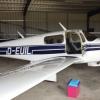Big fright in initial climb
-
Members Online
- redbaron1982
- kortopates
- R Van Dyck
- avanti
- jwarren2
- georgewdean1020
- Shadrach
- eyes_skyward
- Ragsf15e
- Flyler
- FlyingDude
- Jake@BevanAviation
- WilliamR
- Anzaldi01
- Crawfish
- M20S Driver
- skydvrboy
- dzeleski
- Derrickearly
- Jerry 5TJ
- LANCECASPER
- IvanP
- 47U
- richardbrochu27
- varlajo
- Jbguns24
- GMBrown
- TCC
- eman1200
- warbingtonmasonry
- Griswold
- Hawth200
- EKoS
- Dwb62
- Greg Ellis
- wombat
- glbtrottr
- PT20J
- 802flyer
- PeteMc
- daytonabch04
- rklems
- Ron McBride
- Steve Hughes
- phxcobraz


Recommended Posts
Join the conversation
You can post now and register later. If you have an account, sign in now to post with your account.